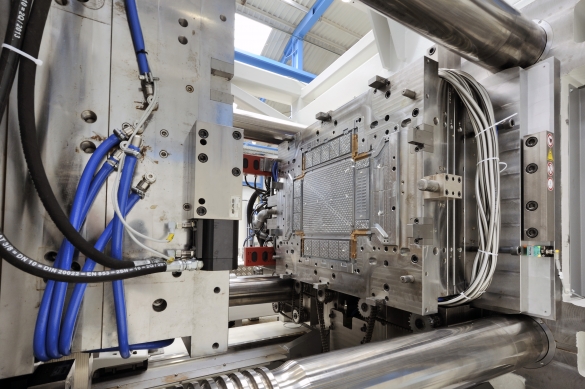What Does Hon Hai Precision Do?s
Wiki Article
Fascination About Hon Hai Precision
Table of ContentsThe smart Trick of Manufacturing That Nobody is DiscussingThe Definitive Guide to MfgThe smart Trick of Manufacturing Industries That Nobody is Talking AboutThe 6-Second Trick For ManufacturingDie Casting - The FactsManufacturing Can Be Fun For Anyone
The text on this page is a sample from our full White Paper 'Shot Moulding for Buyers' - * Sample message * - for complete guide click the download switch over! Introduction This guide is intended for individuals that are wanting to source plastic mouldings. It provides a much needed insight right into all that is involved with developing plastic components, from the mould tool needed to the moulding procedure itself.If you intend to discover better, the guide covers types of mould devices, along with special completing procedures such as colours & plating. Words that are underscored can be located in the glossary in the appendix ... Part I: Moulding: The Fundamentals The Advantages of Shot Moulding Plastic injection moulding is a really specific process that supplies numerous benefits over other plastic handling techniques.
Precision is perfect for really complex parts. Contrasted to other strategies, moulding enables you to incorporate even more functions at very tiny resistances. Look at the photo to the right. lean production. You can hold this moulding in the palm of your hand and it has employers, ribs, metal inserts, side cores and also openings, made with a sliding closed off feature in the mould tool.
Hon Hai Precision - Questions


A Biased View of Mfg
from material feed Product melting; material injection; shot time cooling down ejection to the re-closing of the mould tool ready device all set next cycleFollowing Draft angles - The walls of a moulded part should be slightly tapered in the instructions in which the component is ejected from the mould device, to allow the part to be ejected conveniently.Ejector stroke - The pressing out of ejector pins to expel the moulded component from the mould tool. Ejector stroke rate, size as well as timing needs to be carefully regulated to protect against damages to the ejectors and mould device, however at the same time make the moulding cycle as short as possible.

The Ultimate Guide To Oem
Ribs - When a plastic part has slim walls, ribs are included to the layout to make the slim walls more powerful Side cores - Side activity which creates a function on a moulded part, at an opposing angle to the normal opening instructions of the mould device. manufacturing industries. The side core requires to Recommended Site be able to pull back as the plastic component can not be expelled or else.
Walls - The sides of a moulded part The text on this page is an example from our complete White Paper 'Shot Moulding for Purchasers'.
Shot moulding is widely utilized for making a variety of you could try this out components, from the tiniest elements to whole body panels of automobiles. Shot moulding makes use of a special-purpose device that has three components: the shot unit, the mould as well as the clamp.
The smart Trick of Manufacturing That Nobody is Discussing
, with the volume utilized of the former being considerably higher.: 13 Thermoplastics are widespread due to qualities that make them very appropriate for injection moulding, such as simplicity of recycling, flexibility for a vast range of applications,: 89 and also capability to soften and also stream on heating.In numerous tooth cavity moulds, each dental caries can be the same as well as create the exact same components or can be distinct and also form numerous different geometries throughout a solitary cycle. Moulds are typically made from device steels, but stainless-steels and aluminium moulds appropriate for sure applications. Aluminium moulds are generally improper for high volume manufacturing or get rid of narrow dimensional resistances, as they have substandard mechanical properties and are extra prone to use, damages, and deformation throughout the shot and also clamping cycles; nevertheless, aluminium moulds are cost-effective in low-volume applications, as mould construction costs as well as time are significantly lowered.
When enough material has collected, the material is required at high pressure and velocity into the component creating dental caries. The specific amount of shrinking is a function of the resin being used, as well as can be reasonably foreseeable. To avoid spikes in stress, the procedure usually utilizes a transfer position corresponding to a 9598% complete dental caries where the screw changes from a constant velocity to a constant stress control.
What Does Plastic Manufacturing Mean?
Once the screw gets to the transfer placement the packaging pressure is used, which completes mould dental filling and makes up for thermal shrinking, which is fairly high for thermoplastics about many various other products. The packaging pressure is applied till eviction (tooth cavity entrance) solidifies. Due to its little dimension, the gate is typically the starting point to solidify through its whole thickness.: 16 Once the gate strengthens, say goodbye to material can get in the tooth cavity; accordingly, the screw reciprocates and acquires product for the next cycle while the material within the mould cools down to ensure that it can be ejected and also be dimensionally steady.Report this wiki page